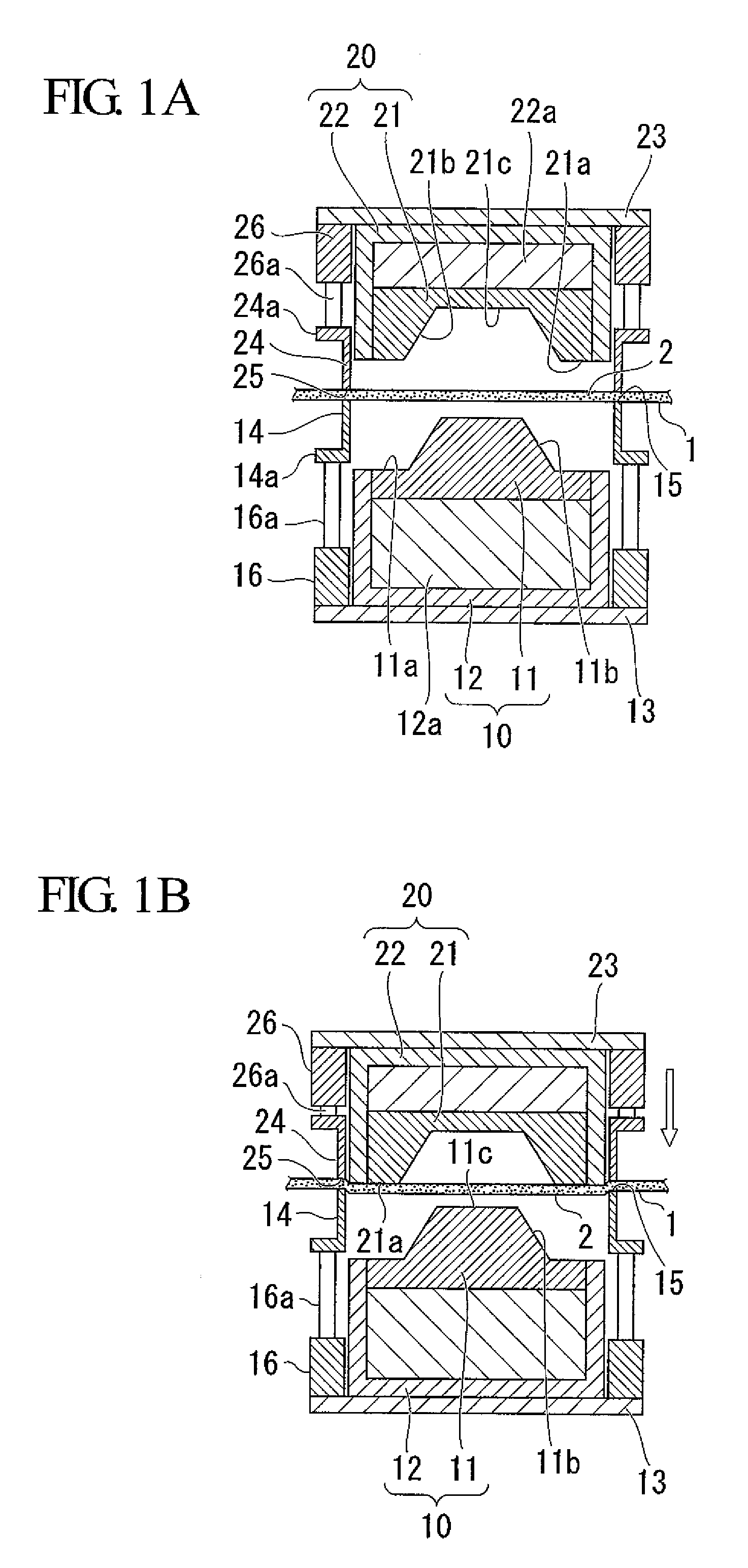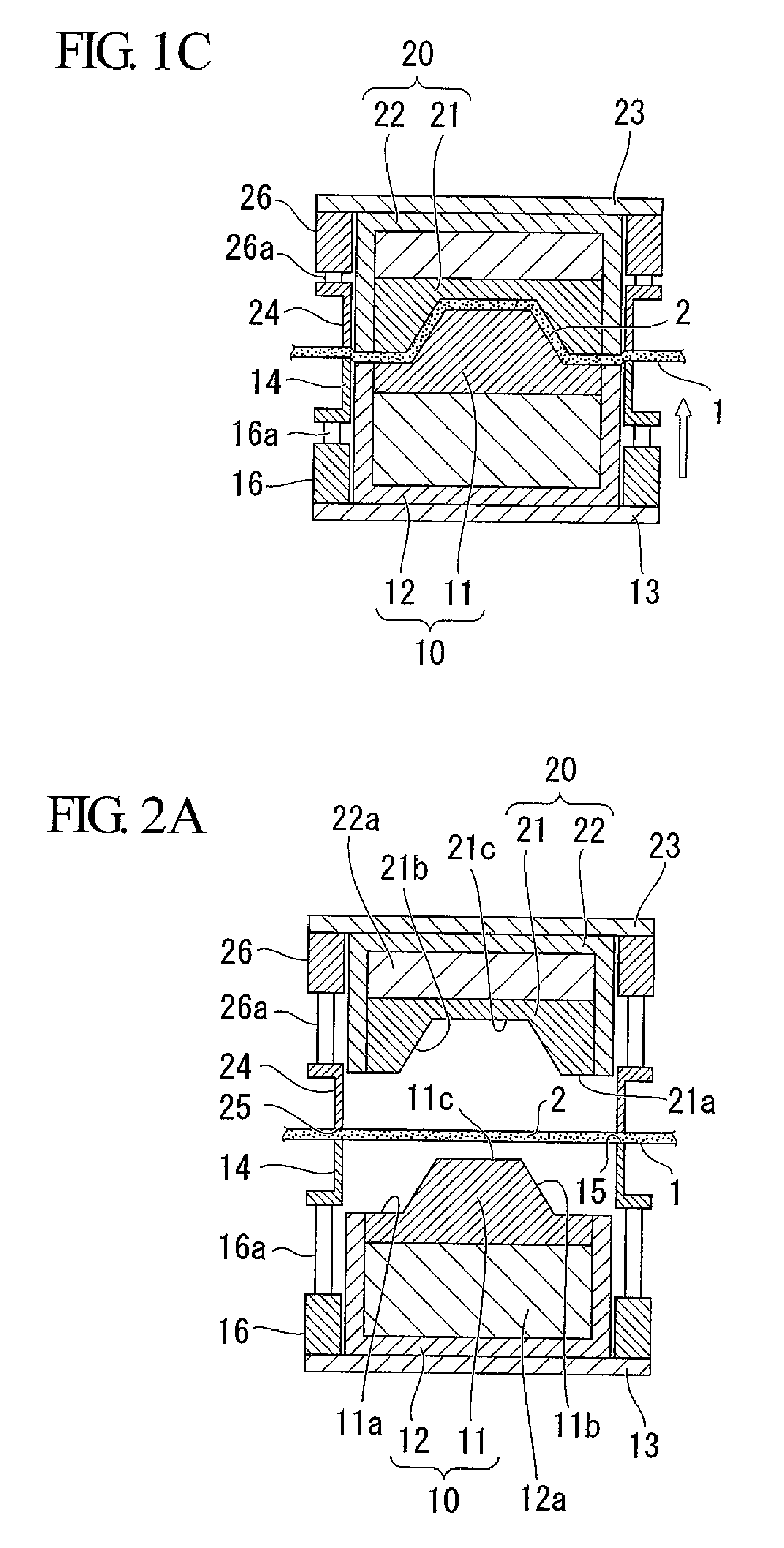Thermoforming method for thermoforming sheet and thermoforming apparatus
a thermoforming sheet and thermoforming technology, applied in the field of thermoforming sheets and thermoforming apparatus, can solve the problems of difficult to express metallic designs by using solvent-free coating methods, sheet is easily wrinkled, coloring methods or coating methods cannot be applied as methods, etc., and achieve the effect of not deteriorating the design properties
- Summary
- Abstract
- Description
- Claims
- Application Information
AI Technical Summary
Benefits of technology
Problems solved by technology
Method used
Image
Examples
example 1
[0132]The production method of the laminate sheets and the matched mold forming method are described below.
(A-1) Thermoplastic Resin Film Layer
[0133]As a transparent or semi-transparent thermoplastic resin film layer (A-1), a rubber-modified PMMA film (product name: “Technolloy S-001” produced by Sumitomo Chemical Co., Ltd., Tg=125° C.) whose haze is 0.1%, and whose thickness is 125 μm was used.
(A-1 / B Intermediate Layer) Decoration Protective Layer
[0134]In order to improve the adherence between the thermoplastic resin film layer (A-1) and the decorative layer (B), 8 parts of an isocyanurate-ring-containing polyisocyanate (product name: “BURNOCK DN-981” produced by Dainippon and Ink Chemicals, Inc., solid content: 75%, solvent: ethyl acetate, the number of functional group: 3, NCO concentration: 14%) was mixed into a mixture solution of 46 parts of an acrylic polyol resin (product name: “6 KW-032E” produced by Dainippon and Ink Chemicals, Inc., solid content: 38%, solvent, ethyl acet...
example 1a
[0162]Except that a black grid pattern of 1 mm intervals was printed on the surface of the decorative layer (B) of the thermoplastic resin film layer (A-1) in advance, a formed product (M-1a) was obtained in the same manner as Example 1. A distortion of the grid pattern was hardly observed on the portion of the expansion rate 110%. The grid pattern present on the portion of the expansion rate 150% was somewhat deformed in whole but the ruled lines were hardly distorted.
example 2
[0163]As a frame clamp for the female mold, the frame clamp 24 having the flange 27 shown in FIG. 6 was used. The downward pressures of four air cylinders for actuating the frame clamp were each set to 0.2 MPa; and the upward pressures of the four air cylinders for actuating the male mold were each set to 0.1 MPa; and the forming method B (FIG. 3) wherein the sheet fixed with movable frame clamps after heating was first pressed onto the male mold was used. Except for these conditions, a forming laminate sheet (S-2) and a formed product (M-2) were obtained in the same manner as Example 1. In addition, the clamping force to fix the sheet with frame clamps was about 800 N (about 95 kPa as a stress), and the mold-clamping force of the female mold and the male mold during forming was about 2.9 kN (about 851 Pa as a stress), and the perimeter of the horizontal plane 21a is a rectangle of 175 mm×196 mm (the area: 343 cm2). With regard to the evaluation results of the formed product (M-2), ...
PUM
| Property | Measurement | Unit |
|---|---|---|
| Temperature | aaaaa | aaaaa |
| Frequency | aaaaa | aaaaa |
| Temperature | aaaaa | aaaaa |
Abstract
Description
Claims
Application Information
 Login to View More
Login to View More - R&D
- Intellectual Property
- Life Sciences
- Materials
- Tech Scout
- Unparalleled Data Quality
- Higher Quality Content
- 60% Fewer Hallucinations
Browse by: Latest US Patents, China's latest patents, Technical Efficacy Thesaurus, Application Domain, Technology Topic, Popular Technical Reports.
© 2025 PatSnap. All rights reserved.Legal|Privacy policy|Modern Slavery Act Transparency Statement|Sitemap|About US| Contact US: help@patsnap.com



